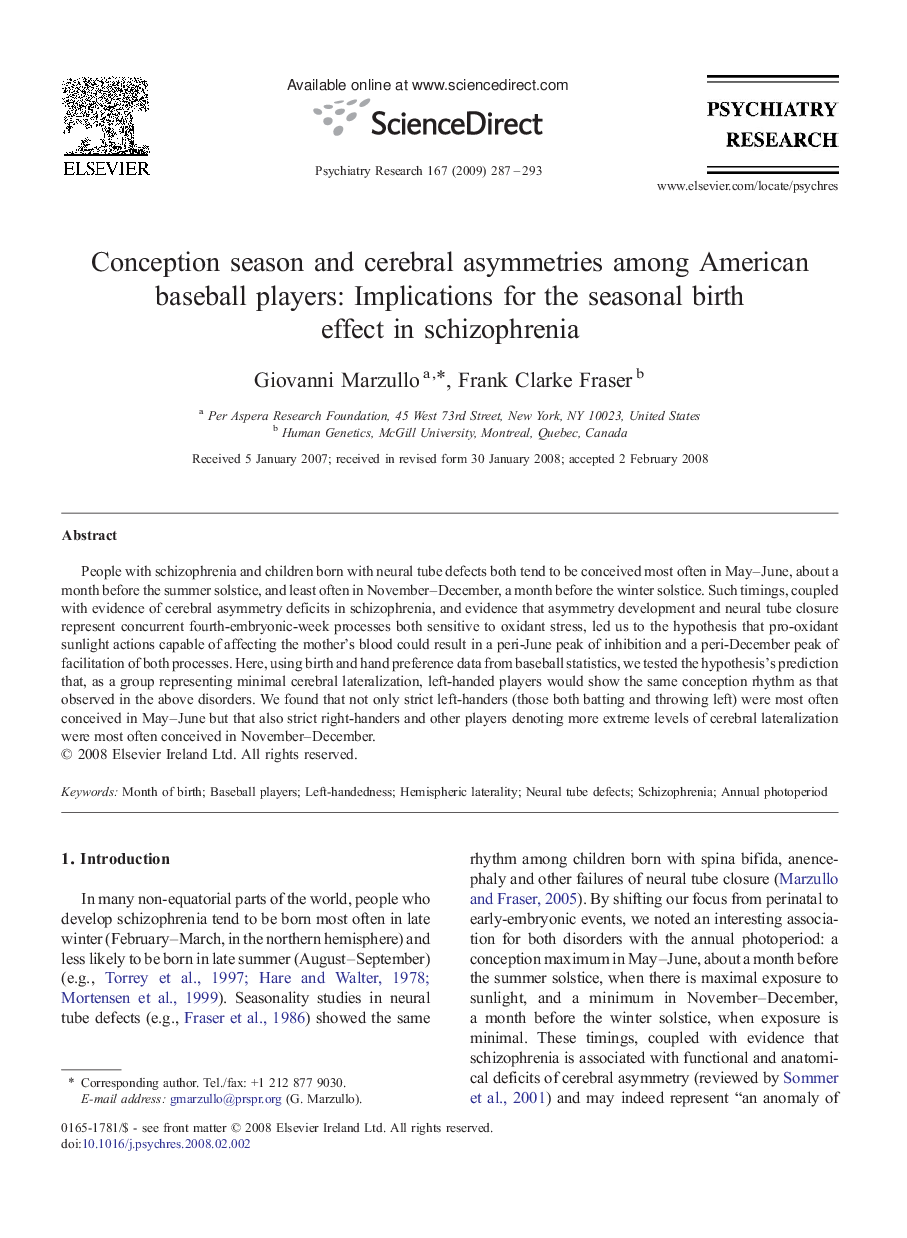| Article ID | Journal | Published Year | Pages | File Type |
|---|---|---|---|---|
| 334143 | Psychiatry Research | 2009 | 7 Pages |
People with schizophrenia and children born with neural tube defects both tend to be conceived most often in May–June, about a month before the summer solstice, and least often in November–December, a month before the winter solstice. Such timings, coupled with evidence of cerebral asymmetry deficits in schizophrenia, and evidence that asymmetry development and neural tube closure represent concurrent fourth-embryonic-week processes both sensitive to oxidant stress, led us to the hypothesis that pro-oxidant sunlight actions capable of affecting the mother's blood could result in a peri-June peak of inhibition and a peri-December peak of facilitation of both processes. Here, using birth and hand preference data from baseball statistics, we tested the hypothesis's prediction that, as a group representing minimal cerebral lateralization, left-handed players would show the same conception rhythm as that observed in the above disorders. We found that not only strict left-handers (those both batting and throwing left) were most often conceived in May–June but that also strict right-handers and other players denoting more extreme levels of cerebral lateralization were most often conceived in November–December.
